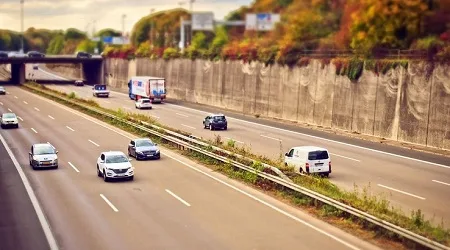Don’t worry, Australians are not spending $200 a week on their car

If $200 a week seems ludicrous, that's because it is.
The RACV 2017 Driving Your Dollars survey is making waves, with some news sites reporting that the average car in Victoria costs more than $200 a week to run. But don't start feeling too virtuous if you came in way under that.
If $200 a week seems too high, even with depreciation and financing, that's because it is.
At no point did RACV ever suggest that this was the actual average cost of keeping a car. It's more like a hypothetical cost to see how much different models would cost compared to each other if purchased under the same conditions.
The exact figure being quoted from the report is $207.84. However, this is only accurate if:
- All car models are driven in equal numbers, meaning there are just as many Teslas and BMWs as Nissans and Hyundais.
- Every single car being driven in Victoria is purchased brand new, and there's no such thing as a used car.
- Every single car in Victoria is purchased 100% on finance.
Other, less significant assumptions, are that everyone is driving 15,000km a year. This isn't too far off the actual average of 14,500km for Victorian passenger cars, but it's not a great real-world assumption.
People who do a lot more driving are probably going to look for a more efficient car, so the average efficiency is probably a lot better than you'll find simply by cramming the average figures together.
What can you learn from the numbers?
Forget about the scary "$200 per week" stuff – there are some good takeaways from the RACV survey. For example, focusing on cost rather than efficiency when buying a car on finance.
Don't forget about efficiency entirely, but don't sweat it quite as much. Car loans have a way of magnifying the list price of a car, so the price difference is bigger than it seems at first.
For example, let's take a look at the slightly ritzy 5D Ford Modeo Ambiente Turbo with an estimated on-road price of $37,117. Under typical conditions, this medium-sized car costs 10.14c/km in fuel expenses, for about $33 a week at 15,000km driven. You're spending about $1,716 a year on fuel.
Now check out its diesel-powered sibling. For about $4,000 more you can get much better fuel efficiency, dropping it down to only 6.33c/km and only $18 per week. Now you're spending about $936 a year on fuel. You're saving a cool $780 a year or more if you drive a lot.
Over five years the diesel engine has pretty much paid for itself (assuming magically consistent fuel prices for both types). This could be well worth it.
However, buying on finance changes everything.
Car loan rates used at the time of the report meant the pricier diesel raised your repayments by $3 a week. Not a lot, right? But it adds up to $156 per year, which is more than enough to switch. Now you'd have to run the car for close to seven years before the fuel pays for itself. With warranties running out, parts needing replacement and other assorted difficulties that come with age, this makes a big difference.
That extra $3 a week car loan repayment completely changes the cost-benefits picture.
- Whether you are buying on finance should probably determine what kind of car you buy
- Where possible, consider partial rather than full financing.
- It's well worth comparing a variety of car loans to find a better rate.
Every little bit can add up to big savings, which can, in turn, shift the balance of which car is the best. In other words, a different car loan puts you in a different car, so always shop around, especially if you're looking to save money overall by paying extra for an efficient vehicle.
Best car takeaways
There are some general rules that stand out from looking at the numbers.
- Want both fuel and price efficiency? Go hybrid over electric. Electric cars are still generally too expensive to justify the costs.
- Want a reliable car to save on repairs? They're all pretty good these days, so look for something that's cheap to fix when needed. This generally means buying common and buying Australian. The more popular the better. The problem with repair costs is that they come all at once, so make it cheap when needed.
- Want cheap? Buy used. Depreciation will burn money faster than anything else, and buying a used car is the best way around it.
- Want something cheap to run? Unless you're driving a complete lemon or a very old or expensive car, the repair costs won't ever be too bad in the long run. They just seem worse than they are because they come all at once. The real savings come from squeeze down all the ongoing costs as much as possible. Carve out lower prices on your fuel expenses, your car loan interest payments and your car insurance. That's the good stuff.
Picture: Shutterstock
